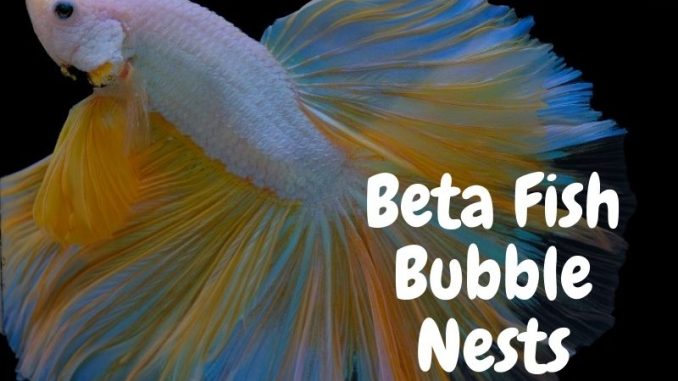
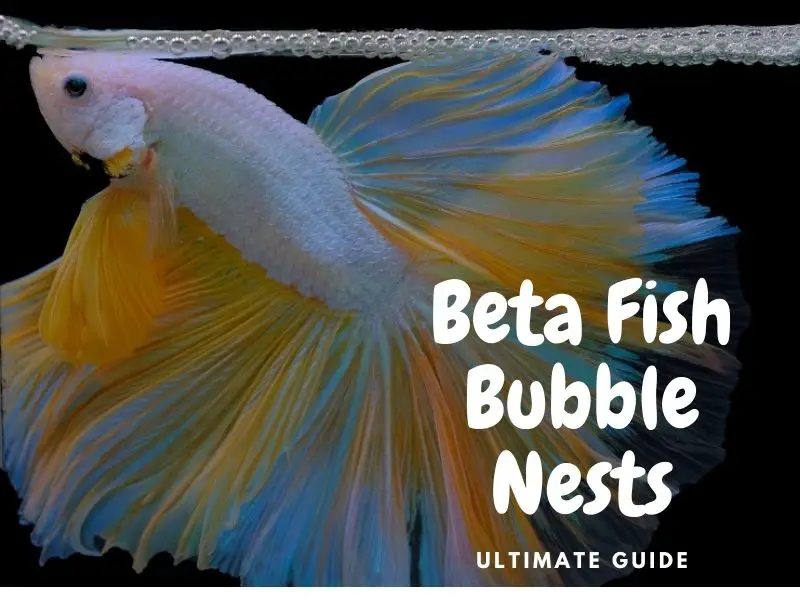
Betta fish are an extremely popular aquarium fish. They are a beautiful species with a fiery personality, so they are a common sight in people’s homes.
If you have just bought one, you may not have anticipated that it would start to blow bubbles. Bettas do this often, as it is how they build their nest when they are ready to breed.
Bubble nests are very interesting structures that most people don’t know much about. You need to understand bubble nests if you want to care for your betta properly, and it is especially important if you want to breed a pair.
TABLE OF CONTENTS
What Is a Bubble Nest?
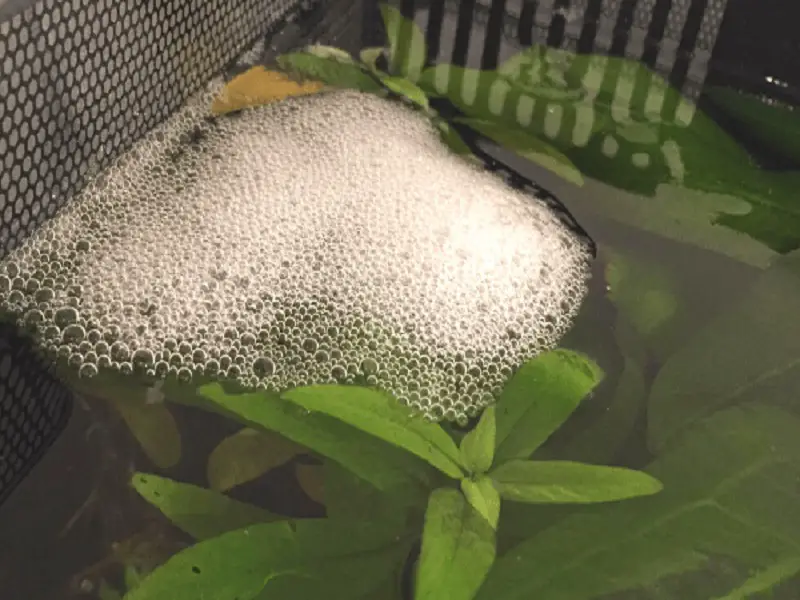
A bubble nest is a large grouping of tiny air bubbles created by the male betta fish for the purpose of breeding.
Bubble nests are a common phenomenon with bettas, especially if you have a mating pair, so most aquarists with bettas will encounter it at some point.
When the female betta fish has laid her eggs, the male betta will scoop them up and carry them to the nest. The eggs will remain protected by the next until they hatch.
The bubbles are filled with oxygen, making the nest particularly valuable for oxygen-depleted waters. The bubble nest sits at the surface, providing access to the oxygen in the air above the water.
Bettas can actually extract oxygen from the air using something called the labyrinth organ.
Fish that lay bubble nests are labeled as aphrophilus. Only a few species do this, most notably in the Anabantidae family.
The dwarf gourami is another well-known aquarium species that does this. In fact, all types of gouramis lay bubble nests, as they are closely related to betta fish.
Other examples of bubble nest builders include the electric eel in South America and even some frog species that lay frogspawn in the bubble nest and guard it until tadpoles are released.
Why Do Betta Fish Use Bubble Nests?
Betta fish live in various tropical freshwater habitats across Asia. They usually live in slow-moving water that has a low oxygen content, which is why they evolved their labyrinth organ, in case they need oxygen from the air.
The lack of oxygen is also why they use bubble nests.
By surrounding the eggs with bubbles, they have a good source of oxygen until they hatch.
Normally, the lack of oxygen would make it unlikely that eggs or fry would be able to survive through to adulthood. Bubble nests have made it possible for bettas to fill a niche and live somewhere that potential predators cannot.
The bubbles also provide a secure structure for the eggs to stick to. This keeps them together while the male stays nearby to protect them from being eaten.
How are Bubble Nests Made?
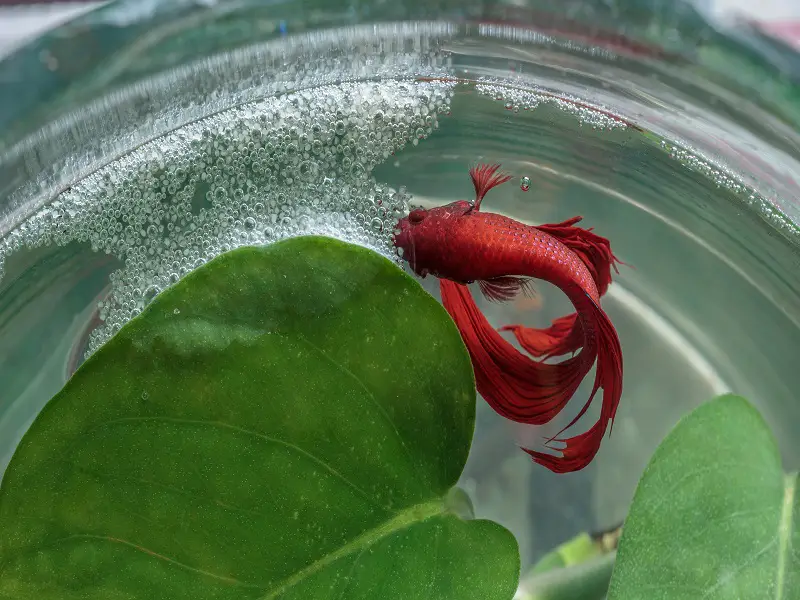
The male betta fish takes in air from the surface using the labyrinth organ, forcing the air through their gills into small, maze-like compartments made of lamellae.
As the air gets pushed into these compartments, it becomes smaller and smaller and eventually comes out as bubbles. Because the bubbles are full of air, they will float up to the surface and stay there.
The process of building a bubble nest is relatively simple and does not take very long, so one may pop up quickly without you realizing it.
Often, the nest is made underneath floating plants or debris as an extra layer of protection. If there isn’t anything floating on the surface in an aquarium, the nest will likely be built in a top corner.
As the bubbles are blown, the male betta coats them in a sticky saliva. This helps to prevent the bubbles from bursting and ensures that they will bond together and securely hold the eggs once they are laid.
With the bubbles secured together by saliva, it becomes more difficult for tank mates to disrupt the nest.
When you have breeding betta fish, it is the male that will create the bubble nest nearly all of the time. The size and thickness of the nest will vary between males.
Once the male has completed the nest, it is then available for the female to lay her eggs. The male will remain close by and protect the nest from danger though.
There does not necessarily need to be a female or fry present for a male to begin building a nest, it is just part of their nature, though spotting a female is usually a trigger.
What Do Bubble Nests Look Like?
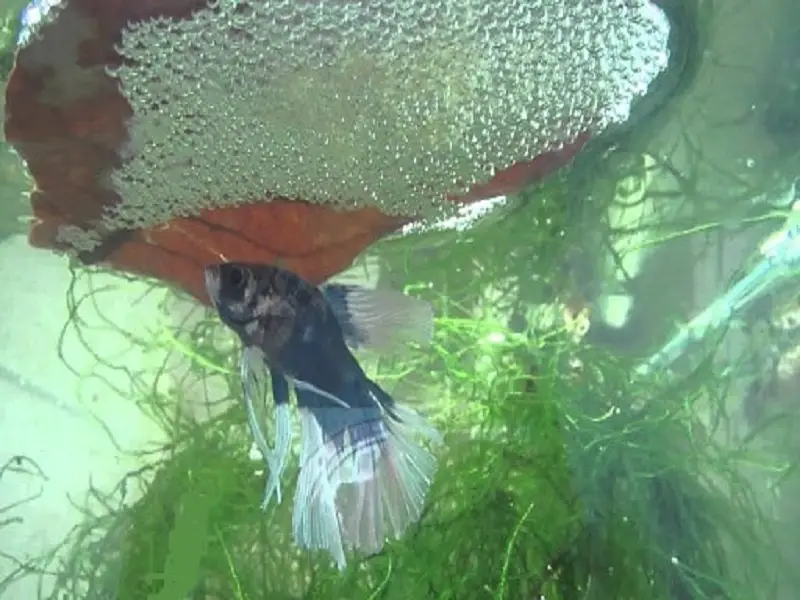
Bubble nests look like a grouping of tightly packed bubbles. They are near the top of the tank most of the time, in a top corner or sheltered under floating debris.
However, each bubble nest is different. They all vary slightly depending on the betta that is making it. One nest could look very different from another.
Some bubble nests are very large and spread further outwards, whereas others remain small and localized. Some are thick, potentially up to an inch thick; others are just a thin layer of bubbles across the surface.
The size of the bubbles can differ too. Some nests have very small bubbles, making the structure look like foam. This is why they are occasionally called “foam nests”.
While the variation is usually down to individual differences between betta fish, there are some factors that seem to influence the nest.
Larger bettas tend to produce larger bubble nests. This makes sense since larger individuals can produce more offspring, so they will need a larger nest to hold the extra eggs.
Age may play a part too. Older individuals often produce smaller nests.
If you spot a particularly small nest, it may have been damaged by tank mates before you found it. The damage could have been caused by a competing male, though these should not be in the same aquarium.
Even just the presence of another male in their environment can cause a betta to keep their nest small and closer to its territory.
How Do Betta Fish Breed?
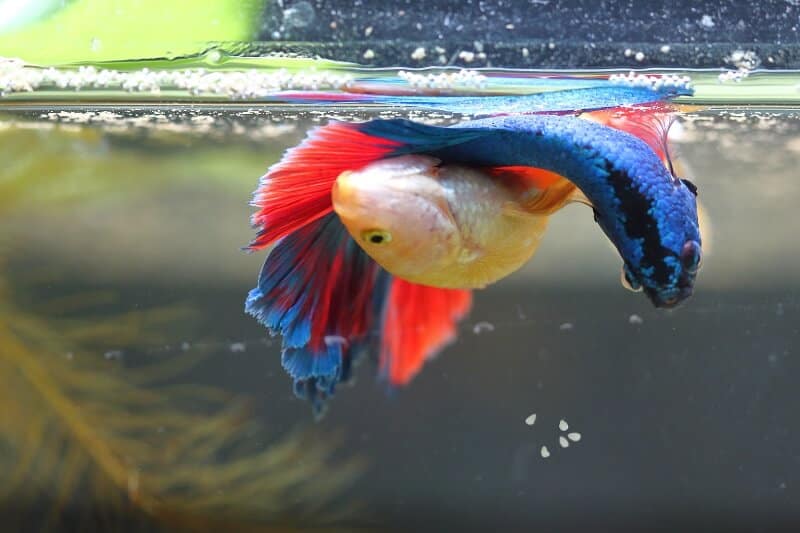
In the wild, a female selects a male based on the size, color, and quality of their bubble nest. If the nest is not good enough, she might destroy it.
Female bettas do not get the luxury of choice in an aquarium. Hopefully, they are willing to breed with the partner you have chosen.
When a female is ready to mate, her colors will darken. The male will then begin to court the female.
Once the pair has mated, the female betta will release her eggs. The male will collect them in his mouth and take them up to the bubble nest.
It is then his job to defend the nest from danger until the eggs hatch after a few days. This could be by warding off curious tank mates or collecting a fallen egg.
The fry that emerges are small and vulnerable, so they stay near to the nest and, more importantly, their protective father.
Once the fry are stronger and more independent, they will move away from the bubble nest. The male betta may then get straight to building a new nest to hold another batch of eggs, but he usually waits a little while.
Breeding in captivity can be difficult; it requires preparation and a perfectly maintained aquarium.
Successful breeding is made even rare due to most people only keeping one betta, to avoid aggressive outbursts.
How to Encourage Bubble Nest Production in Your Aquarium
Some male bettas will keep making bubble nests over and over again. Others will only do it when a female is ready to mate.
Introducing a female to the male tends to prompt him to start building a nest.
Even with a male that enthusiastically makes lots of nests, it can be difficult to get a pair to mate successfully. There are a few things you can do to increase the odds though.
Setting Up the Breeding tank
The best betta fish tanks are large and rectangular. If your tank is too small, then your bettas may become too stressed to mate. It will also make it harder to maintain the water quality. Aim for 20 gallons or more.
You will need an effective filter to keep the water clean, but make sure it is not producing a strong current. Bettas are used to slow-moving or stagnant water in the wild.
Add some decorations to create some interest for your fish. Live plants are a great way to do this too, and they will help to maintain the water quality.
Add some decorations or plants that will float on the surface. These will act as a secure surface for a male betta to attach to his nest. Do not cover the entire surface of the water though.
Selecting a Mating Pair
Firstly, think about the type of betta that you want to breed (crowntail, koi betta, plakat, etc.). Once this is decided you can look for a male and female.
Observe any potential purchases carefully. Look across their body for signs of disease or a loss of color.
Their behavior can indicate that something is wrong too. You don’t want them to be looking lethargic, and they definitely shouldn’t be resting on the bottom of their tank.
Be sure that you are getting one of each sex, they are easy to differentiate. Females have smaller bodies and fins. Their colors are less vibrant as well. They generally look less majestic compared to males.
There is no guarantee that the male and female bettas you choose will mate.
You may be able to find someone selling a pair of bettas that have already mated in the past. This is ideal, but it still doesn’t guarantee that they will mate in the future.
Conditioning Your Betta Fish
The mating pair should be kept separately initially. You need to take the time to condition each one individually to get them in a good condition for breeding.
High-quality foods are the best betta food. Your bettas need plenty of nutrients and energy for mating. Feed each betta 2-4 times each day.
Live/frozen foods are the best for supplying lots of nutrients; dried foods have lost most of their nutrient content.
They should each be kept at a warm temperature of about 78-80°F.
After a couple of weeks, you can begin to introduce the male and female. Start by keeping them separated using a see-through divider, so they can still see each other.
This should trigger the male to start building a bubble nest.
If the female betta fish is interested in the male, her colors will darken, and she could develop stripes.
Maintenance
The environment needs to be in perfect condition from beginning to end, so you need to be able to maintain the tank effectively.
Clean the tank regularly, including performing partial water changes as often as possible.
Make sure that the temperature is correct and use a water testing kit to confirm that the parameters are as they should be.
Conclusion
You do not need to worry if you spot your betta blowing bubbles. It is not a sign of disease or that anything is wrong. They are simply building a bubble nest.
Bubble nests are very impressive structures, allowing bettas to produce eggs that can survive and hatch in low-oxygen environments.
One betta might build more nests than another too. Some people will spot nests dotted about regularly in their aquarium, but many bettas will only start the build once they’re ready to spawn.
If you want to encourage your betta to build a bubble nest, there are a few things you can do to increase your chances. This is useful since bubble nests are a crucial part of their breeding process.
Have your Betta Fish been making bubble nests? Let us know in the comments below…



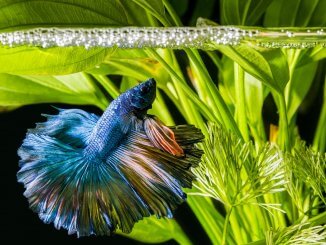
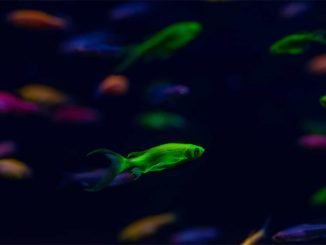

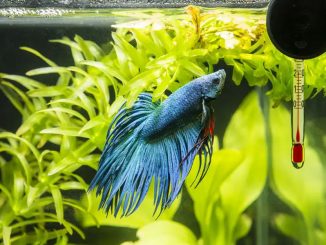

Be the first to comment